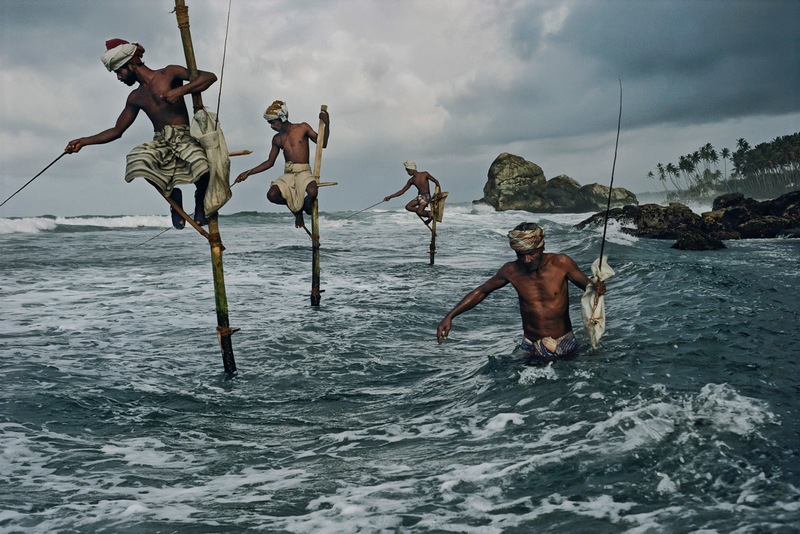In the waters around Sri Lanka, you'll find the world's only stilt fishermen.
斯里蘭卡周圍的水域有世界上唯一一群高蹺漁民。
Perched atop a handmade stilt driven into the sand, these fishermen are some of the last of their kind.
坐在手工制作并被穩(wěn)穩(wěn)地立在沙地里的高蹺上,這些漁民已經(jīng)是同類漁民的最后一批了。
But for those who still fish, it is about carrying on a tradition only found in this part of the world.
然而,對那些仍在從事這份職業(yè)的人來說,事僅該地獨有的一項傳統(tǒng)的傳承。
The history of stilt fishing is said to go back to World War II,
據(jù)說,此地高蹺釣魚的傳統(tǒng)可以追溯到二戰(zhàn)期間,

when food shortages and a lack of proper boats caused fishermen to get creative for their catch.
那時,由于食物短缺,又沒有合適的漁船,為了抓到魚,漁民們便不得不發(fā)揮他們的奇思妙想。
Fishing from a stick offshore helped them catch more fish.
到遠(yuǎn)離海灘的地方坐在棍子上釣魚能給漁民們帶來更大的收獲。
Fishing isn't as lucrative as it once was, so most stilt fishermen have other jobs to pay the bills but continue to stilt fish to keep the tradition alive.
如今的收獲已經(jīng)不如從前了,所以,為了養(yǎng)家糊口,大部分高蹺漁民都已經(jīng)轉(zhuǎn)投其他行業(yè)了,但他們并沒有因此放棄這一傳統(tǒng)。











